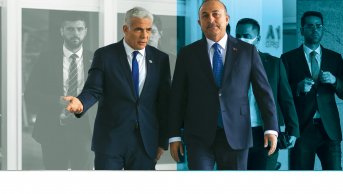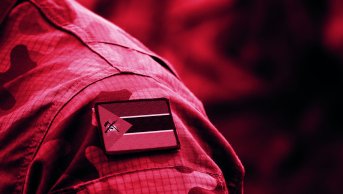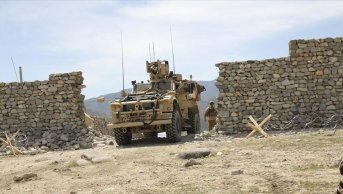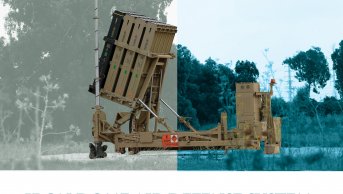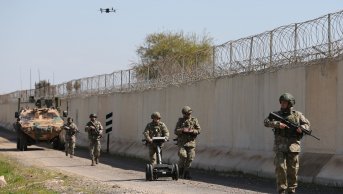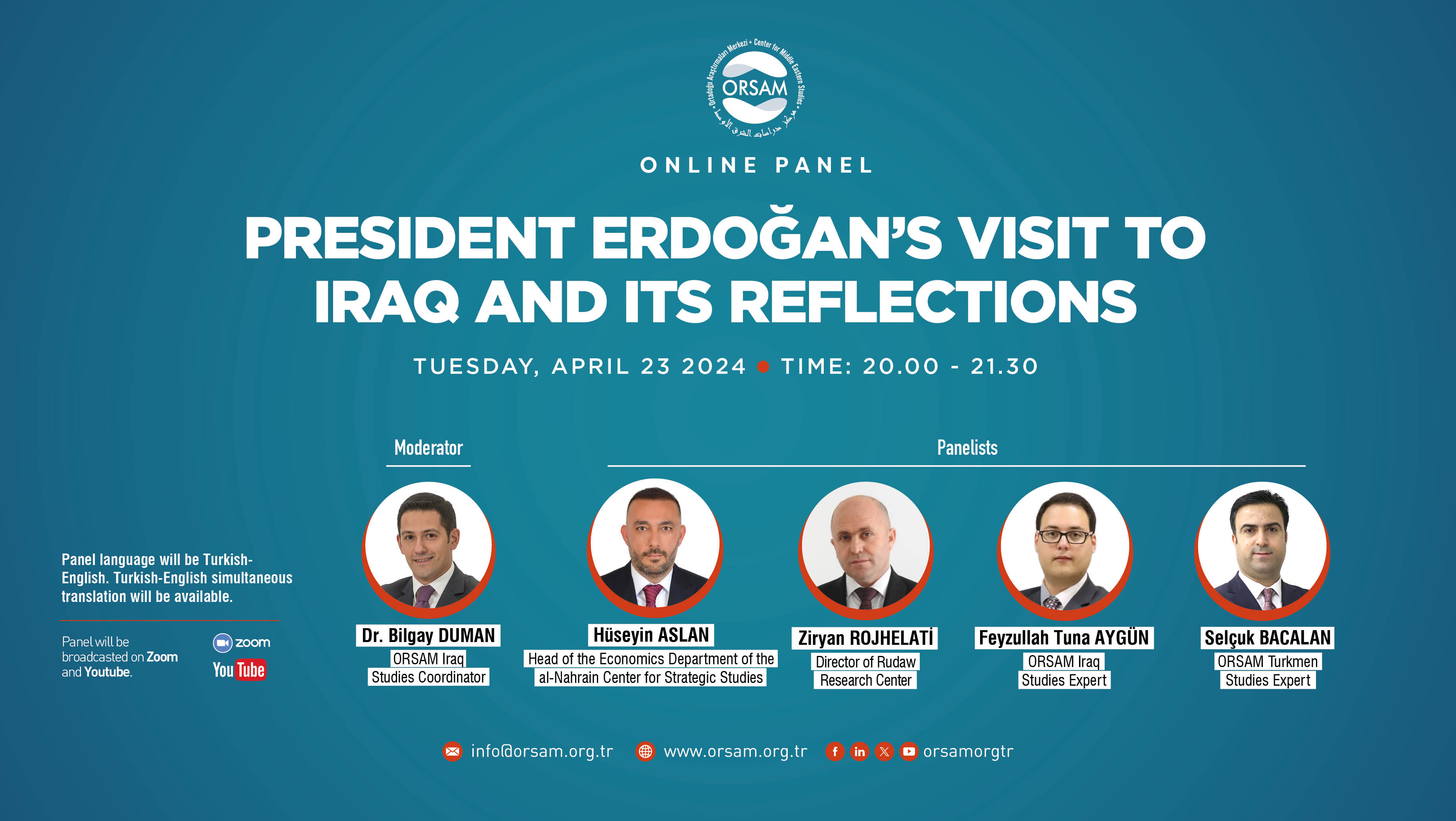Is It the Final Stage in Idlib?
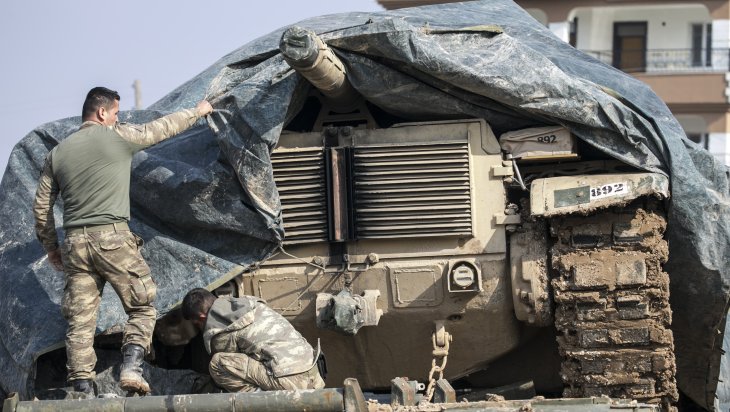
Being the only de-escalation zone which the regime could not still have the control of, Idlib stands out as a time bomb ready to explode. The city has received a large number of people who are forced to take refuge there. It also accommodates opposition groups such as Hayat Tahrir al Sham (HTS), which has been designated as a terrorist organization by the international community and Turkey, and the Al-Zengi Movement and Ahrar al-Sham, the strength of which have weakened in the face of HTS over time. It is possible to evaluate this feature of the city not only in the context of the military tension that escalated but also in the sense of the continuation of the forced movement of people in case of possible regime control. With the population that gathered in Idlib following the fall of the East Ghouta, Daraa, Rastan, Talbise and Quneitra regions into the hands of the regime, Idlib has doubled in population and become a city of not only almost 45 thousand fighters belonging to various groups but also 4 million inhabitants.
Starting with the Khan Shaykhun move in August, the regime launched its advance in the southeast of Idlib and, during this period, the Turkish observation points numbered 8, 10, 11, 12 have been left within the regime area. With the Assad administration regaining control of the field, the regime and Russia regard Idlib as a vital target combining actual and potential human resources that could threaten this arrangement, not only in the short term but also in the medium and long term. In case of the regime control of Idlib, approximately 1 to 1.5 million refugees may flow into Turkey. In addition to the possible humanitarian and financial burden of such a flow on Turkey’s shoulders, this scenario reveals the regime’s increasing desire to force all opponents to migrate to Turkey and, thus, secure its own power in the upcoming decades. Given the importance of the M4 and M5 highways and the increasing threat towards the Turkish observation points as a result of the regime’s deliberate advance on Saraqib and Maarat al-Numan to ensure the control of the given highways, it may be concluded that a possible fall of Idlib would lead to a humanitarian crisis, trigger migration, and pave the way for the elimination of the moderate opposition. These possibilities have raised the need, on the Turkish part, to take a concrete step. Since the beginning of February, Turkey has carried out an intense military delivery to Idlib, deployed APCs, tanks, howitzers, heavy construction equipment and sent commandos to the region. Hence, Turkey seemingly plans to resort to the military deterrence option for resolving the issue. As a result of the fact that 5 soldiers were martyred and 5 wounded on February 10, 101 regime elements were neutralized, 3 tanks and 2 gun emplacements were destroyed. In the following days, the statements made by the Ministry of National Defense announced that 207 regime elements were neutralized. At the same time, the use of the Koral systems that jam the systems of the regime and the Russians will aim to provide short-term operational areas while the MANPADS systems, which could be made available to the opposition groups, will impose restrictions on other actors even in cases when Turkey cannot use the airspace as she wishes. Accordingly, the Korals have been deployed along the Idlib border. The fact that a Syrian regime helicopter was downed by the opposition on February 11 and that this was carried out by the FIM-92 system also points to such tools and measures that can be utilized over time.
When possible scenarios are taken into account, it is unlikely for the regime and Russia to withdraw behind the Turkish observation points and leave Idlib completely due to the threatening potential of the city to the regime in the short, medium and long term. One of the possible ways to ensure the withdrawal Turkey wishes to see happening in Idlib, which is critical for the regime, is to render the military and financial cost of the fight in the city unbearable for the regime by attacking it on several fronts at different times together with opposition elements in Idlib as well as the Euphrates Shield and Olive Branch areas. However, in this situation, the control of the airspace would belong to Russia, and even if Russia is not directly involved in the conflict, the results of the implementation of such a policy should be carefully evaluated, especially given Russia’s support for the regime, albeit limited, until now. In the meantime, for the complete control of the city, the regime would need to directly and comprehensively target the Turkish Armed Forces, which significantly increased its presence in the field in qualitative and quantitative ways. Given the political, diplomatic and military costs of such a scenario for Russia, on the one hand, and the tension between the US and Turkey about the YPG and F-35 problems, on the other, it does not seem rational for Russia to give rise to such tensions, which would build a bridge between Turkey and the US.
Currently, Idlib comes up as a field where the parties measure each other’s strength in a controlled manner, test each other's military and diplomatic limitations and abilities, increase their abilities in this direction and try to measure the position of the actors inside and outside the field. This process may pass into a new phase where military engagement would escalate rapidly. Yet, this seems unlikely as the cost and consequences of such an act, which would mean the declaration of war between the parties, would be too huge for them to handle. Nevertheless, there has been no balance of power, which would prompt the parties to limit their activities in their current spheres of influence and to resolve the problem through diplomacy. Therefore, one of the most likely scenarios in the first place is the emergence of new boundaries of Idlib and the identification of new control areas. It is possible for the regime to prioritize this option especially as it has taken full control of the M5 highway and also Aleppo for the first time since the beginning of the civil war and increased its control in the country to a great extent with the support of Russia and Iran over a period of years. However, the permanence of the new borders to be drawn in Idlib in such a possibility will also be shaped by the course of diplomatic and military dynamics in the coming years. In the diplomatic area, the Idlib issue has led to a countless number of talks, negotiations and public diplomacy efforts. US Special Envoy for Syria James Jeffrey’s sudden visit to Turkey is very important. This visit and the statements of support from the US may be interpreted as a partial restoration of Turkey-US relations and a search, on the US part, for a ground of cooperation with Turkey which would make the increasing dialogue between Turkey and Russia suffer weakening. The prevention of the Idlib move is crucial for the US and the EU. For the former, it would prevent Russia from further strengthening her position in Syria and ensuring her permanence in the region. As for the latter, it would hinder the possible refugee wave. And yet, these actors and NATO have neither taken a concrete initiative nor adopted a strong stance even at the discourse level with respect to the Idlib issue. How much of a role the involvement of the US, which had to implement her withdrawal decision even without being able to properly evacuate some of its bases, will play in the Syrian field, and what kind of stance the EU, which has quite an inextricable relationship with Russia in terms of energy security, will adopt remain unclear.
Thus, based on the current dynamics on the ground, it would be more rational to consider this issue in the light of the diplomatic and military means of Turkey, Russia, and, to some extent, Iran. In this context, it is necessary to evaluate some important diplomatic moves that proceed simultaneously with military actions. On the first day of the operation, Director of the Russian Foreign Intelligence Service Sergey Naryshkin paid a visit to the UAE. Indeed, the UAE supports different actors than Turkey does in several theaters, including Libya and Syria, and is a part of the bloc that aims at containing Turkey in the eastern Mediterranean. Hence, the agenda of the talks has been the subject of curiosity. Meanwhile, US Special Representative to Syria James Jeffrey visited Turkey and made a statement in Turkish that directly targeted Russia and the regime and referred to the alliance with Turkey. This very rhetoric has been supported by Mike Pompeo as well. In the light of the Turkey-Russia tension, beyond the prevention of Russian power in the region, all these US moves can be interpreted as efforts to better the relations with Turkey and make Turkey keep her distance from Russia. However, US National Security Advisor Robert O'Brien sends captious messages such as that the US will not directly take military measures, does not consider such a role necessary, and Turkey and Russia should resolve the problem between themselves. This situation can be assessed at the same time as a reflection of different perspectives of various cliques in the US regarding, on the one hand, Turkey’s and Russia’s roles in the region, and, on the other hand, the US role in the region. In spite of her withdrawal efforts, to escalate the tension between Russia and Turkey, and to derive benefit through her limited assets, the US is likely to be more involved in diplomatic, not military, terms in Syria, especially with respect to Russia. An incident that could have turned into turmoil between the regime and the United States occurred on February 12. As a result of the US military’s response to being fired upon by the militias who were wearing the regime uniforms, a regime soldier was killed, and the US jets hit 2 regime positions. In the face of the more active diplomatic efforts by the US, Russia’s Embassy in Ankara shared two pictures on social media; the first picture showed Pompeo’s statement on the issue and the second demonstrated the report by the Anadolu News Agency about the relationship of the US and the YPG. However, developments that have been on the agenda in recent years, such as Russia's negotiations with the terrorist Mazloum and permission for the PKK to open an office in Moscow raise questions about how Russia differs from the US on this subject. In addition to the aforementioned YPG-Russia connection, considering the downing of a Turkish helicopter by Russian MANPADS in Cukurca in mid-2016 (and the demonstration of this system on the deck of the ship Caesar Kunikov while passing through the Bosporus in 2015 shortly before the given event) and the attack on Turkish tanks by the Kornet anti-tank missile system in Syria, it does not seem possible for Russia to give a good account of herself more than the US in terms of public diplomacy. As the possibilities of cooperation on certain issues periodically and with specific focus are rationally investigated, the agendas of each power in the region and the periodic order of priority of these agendas change. In line with her national interests, Turkey should instantaneously run through her relations with these actors and must adopt some policies that sometimes require the use of hard power. The accuracy of this strategy is quite obvious given the consequences so far of Operation Euphrates Shield, and Operation Olive Branch, and Operation Peace Spring.

